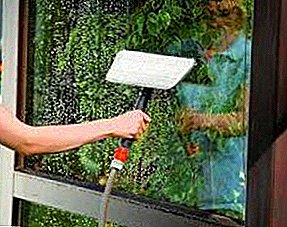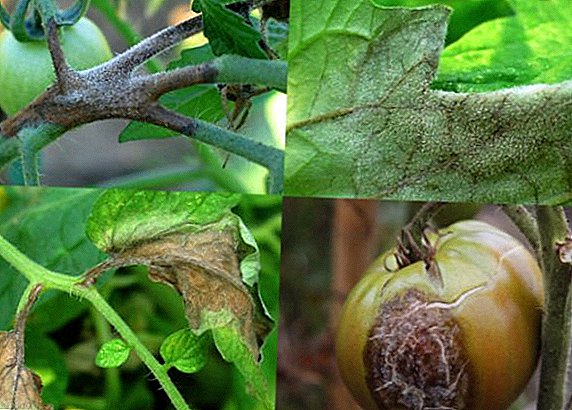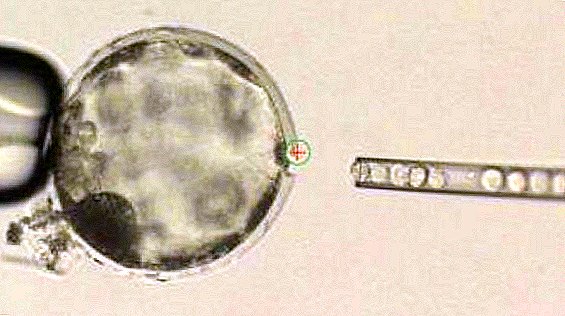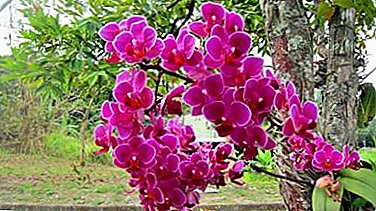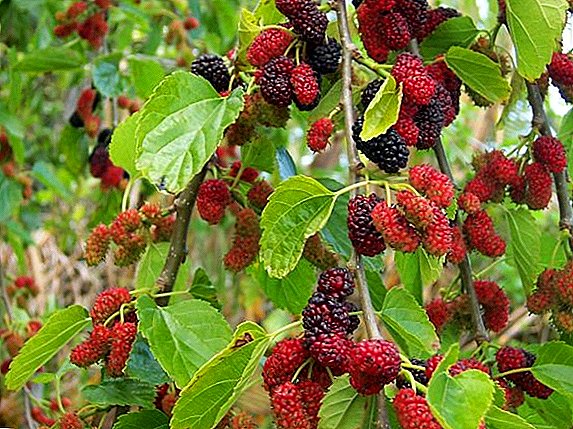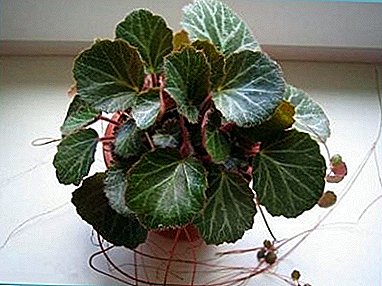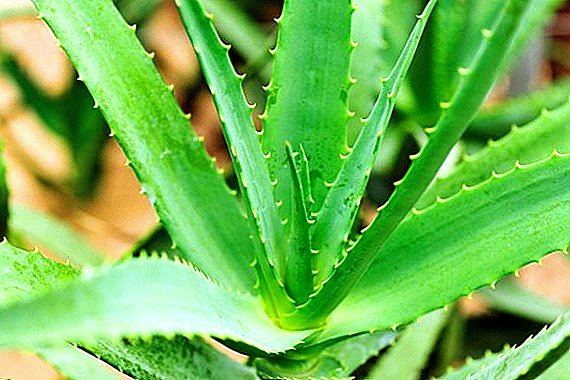 Aloe or agave is a succulent, the healing properties of which have been known since antiquity. Today it is used in traditional and traditional medicine for the treatment of many diseases, in cosmetology. Medicinal properties, unusual appearance, excellent survival rate and unpretentiousness in the care made the plant popular in home floriculture. The article contains information on how to plant and how to grow aloe.
Aloe or agave is a succulent, the healing properties of which have been known since antiquity. Today it is used in traditional and traditional medicine for the treatment of many diseases, in cosmetology. Medicinal properties, unusual appearance, excellent survival rate and unpretentiousness in the care made the plant popular in home floriculture. The article contains information on how to plant and how to grow aloe.
Planting dates of aloe
Planting dates agave depend on the selected method. So, the seeds must be sown in March-April. Aloe cuttings can be planted throughout the year, but it is better in spring or summer. Planting in a leaf, a process in a pot is also carried out in spring and summer. 
Preparing for landing
Preparation for planting involves the selection of a good place to grow, the capacity for planting, the purchase or mixing of the soil.
Did you know? The first entry about aloe, which is known today, dates back to 1500 BC. er The medicinal properties of the plant are mentioned in a letter on Ebers papyrus, which is conserved in the University of Leipzig in Germany.
Optimal growing conditions
The plant should be grown in a well-lit place, but with protection from direct sunlight, which burns the foliage. For the cultivation of young aloe suitable sills facing the south and east. On the north side, the flower grows poorly. But if there are no other options, you need to organize additional lighting to create the length of daylight needed by the plant.  In spring and summer, aloe can grow in a wide range of temperatures - from + 15 ° С to + 40 ° С. In winter, it is necessary to create cool conditions with a temperature regime from + 12 ° С to + 14 ° С. In summer, it is advisable to keep a pot with a flower in the open air, for example, on a balcony or terrace. Moisture for aloe is unprincipled. However, it grows better when it is above average. Spraying the plant is not necessary, the humidification of the spray produced at some distance from the flower.
In spring and summer, aloe can grow in a wide range of temperatures - from + 15 ° С to + 40 ° С. In winter, it is necessary to create cool conditions with a temperature regime from + 12 ° С to + 14 ° С. In summer, it is advisable to keep a pot with a flower in the open air, for example, on a balcony or terrace. Moisture for aloe is unprincipled. However, it grows better when it is above average. Spraying the plant is not necessary, the humidification of the spray produced at some distance from the flower.
Capacity selection
For planting agave should purchase a plastic pot. From it, moisture evaporates slowly, which is good for succulents. Capacity size is selected in accordance with the root system. When installing the plant in the pot from the walls to the roots, a distance of 3 cm should be maintained. The depth of the container may be small. When choosing the size of the container can also be guided by the ratio of the length of the piece to the diameter of the pot. Ideal proportions - 2 to 1.
Important! When planting an agave, a high layer of drainage is laid on the bottom of the pot (made of expanded clay, pebbles, crushed red brick), and a layer of gravel or dry sand is laid on the surface of the ground.
Soil preparation
The requirements for soil for aloe bit:
- Good moisture and air conduction.
- Neutral or slightly alkaline level of acidity.
Soil for planting can be purchased at a specialty store. For agave suitable soil substrate developed for the cultivation of succulents and cacti. Also, the land can be mixed with your own hands.
For this you need to take in equal shares:
- turf ground with clay;
- sand;
- leaf earth;
- humus.
Earth, made by his own, you need to disinfect. 
There are several ways to do this:
- Hold over steam.
- Spill with potassium permanganate solution.
- Calcify in the oven (microwave).
- Pour boiling water.
Ways to plant aloe at home
There are several ways of planting an agave:
- From the separated and rooted leaf.
- Harvested cuttings.
- Separated and rooted tip.
- Seed material.
- Root shoots.
Consider each of the methods in detail.
You will be interested to learn how to propagate aloe at home.
From sheet
To plant an agave with a leaflet, you must:
- Choose a healthy leaf, without damage, stains.
- Cut it with a sharp, disinfected knife, scissors or shears.
- To sustain in the open air for 7 days for complete drying.
- Process cut with crushed activated carbon.
- Plant in wet sand to a depth of 1 cm for rooting.
- Moisten the soil periodically.
- After the roots appear, transplant a leaf into a 7 cm high pot.

Cuttings
When planting cuttings require arrangement of mini-greenhouses. The stalk is cut with a sharp disinfected knife and powdered with coal. Then give time to dry. Then placed in wet sand to a depth of 4 cm. The handle is covered with a plastic bottle and placed in a warm room. Every day it is aired. Moisturize as needed. After the appearance of the roots transplanted into a pot. 
Tops
The top should be cut with a sharp knife and kept in a sunny place for 1-2 days to dry the place cut. Next, you need to sprinkle it with wood or activated carbon to avoid rotting. Then the top for the formation of the roots is planted in wet sand to a depth of 4 cm. After the roots appear, they are transplanted into a permanent pot.
Seeds
When planting by the seed method, it is necessary in advance to prepare a light, loose and moist soil, a small, narrow container. The soil is mixed from leafy ground (1 part), turf (1 part), sand (0.5 parts). It is possible to add charcoal or brick chips as a baking powder. Tara is filled with soil, spread on its surface, seeds, deepening by 1 cm. Sprinkled with a layer of sand on top.  The container is covered with glass or film and placed in a room where the temperature is maintained above + 20 ° C. Seedlings periodically moisturize and air daily. After the sprouts appear, the shelter is removed. When sprouts form 3 leaves, they dive into separate containers 5 cm high. They can be planted in permanent pots after 2-4 months.
The container is covered with glass or film and placed in a room where the temperature is maintained above + 20 ° C. Seedlings periodically moisturize and air daily. After the sprouts appear, the shelter is removed. When sprouts form 3 leaves, they dive into separate containers 5 cm high. They can be planted in permanent pots after 2-4 months.
Out of Scion
From the process you can also grow an adult plant. During transplantation, it is necessary to remove the flower from the pot and clean the root system from the ground. Then carefully separate the processes. Each must have roots. They can immediately be planted in pre-prepared containers with the ground, making sure that the lower sheets do not touch the soil. If in the process of separation "kids" were damaged, they must be kept for 3-4 days before planting so that they dry out.  Sometimes it happens that the process breaks off without roots. In this case, you should figure out whether it is possible to plant it without roots. Broken part should be placed for several hours in the refrigerator. During this time, prepare the ground and the capacity for landing. The plant is deepened into a moist soil 1-2 cm deep and tied to a support. Such a landing will allow it to take root and begin to grow.
Sometimes it happens that the process breaks off without roots. In this case, you should figure out whether it is possible to plant it without roots. Broken part should be placed for several hours in the refrigerator. During this time, prepare the ground and the capacity for landing. The plant is deepened into a moist soil 1-2 cm deep and tied to a support. Such a landing will allow it to take root and begin to grow.
Aftercare for indoor plants
Caring for an agave is simple - you only need to regularly water, periodically fertilize and replant the plant.
Watering
In the summer of aloe need to be watered, watching the condition of the soil. Humidification is produced as soon as the surface layer dries. That is, the frequency of irrigation depends on the temperature and humidity of the air, lighting, and the composition of the soil. Usually it is 2-3 times a week at a temperature of + 25 ... + 30 ° С. In winter, watering should be rare - 1-2 times a month. Moisten the succulent with warm soft water. It can be recruited from the tap, but separated by at least 1 day.
Read more about watering aloe.
Watering with cold water is prohibited, especially at low temperatures. This threatens to rot the roots. The best way to water - under the root. It is necessary to control that the drops do not fall into the outlet. Otherwise, rot may develop. Also a good way to water - the bottom. If the plant receives moisture from the pallet, it regulates how much water it needs. 
Fertilizer
Provided that the flower is annually undergoing the procedure of transplanting into a new soil, it does not need additional fertilization. He has enough elements that are in the soil. If the owner of an agave transplants it less often and only renews the top layer of soil, then during the growing season - from spring to September - once every 2-3 weeks it is necessary to feed. For aloe fit ready-made mineral complexes developed for cacti and succulents.
Important! If you grow aloe with medicinal properties, the leaves should be stored wrapped in food film in the refrigerator for no longer than 3 weeks. Juice is stored in the refrigerator for 3 days in a dark glass container.
Plant Diseases and Pests
If aloe is properly planted, the soil and place have been successfully chosen for it, it receives sufficient care, then, most likely, such a procedure as the treatment of diseases and harmful insects can be avoided. But if you ignore the care, spend it irregularly, make mistakes when planting, aloe may experience the following diseases or problems:
| Disease | Symptoms and Causes | Treatment methods |
| Root rot |
|
|
| Shrinking of leaf ends | Long absence of transplant. | Transplant to new soil and larger pot. |
| Thinning leaves |
| Increase the duration of daylight. To establish the recommended mode of irrigation. |
| Yellowing of leaf ends | Lack of nutrients. | Fertilize or transplant to nutrient soil. |
| Brown spots on leaflets | Inadequate hydration. | Adjust the mode of irrigation. |
| Soft dark spots on the leaves | Infection with fungal disease. | Treatment with systemic fungicide permitted for indoor plants. |
| Leaf redness | Too bright lighting. | Move the pot to a darker place or priten it. |
| Wilting plants |
| Adjust the watering. Heat the water to moisten. |
Of the insects for aloe most dangerous:
| Pest | Symptoms of defeat | Treatment methods |
| Mealybug (insect with a body length of 2-5 mm, covered with white patches and hairs) |
| Processing garlic solution (at the initial stage of infection). Spraying "Intavir", "Fufanon", "Decis". |
| Nematode root (insect with a body size of 1-2 mm, living under the ground) |
| Remove affected roots. Processing "Vidatom", "Tecta". |
| Thrips (small winged insect with a body length of 1-2 mm) |
| Spraying "Fitoverm", "Intavir", "Decis". Watering the soil "Konfidor". |
| Spider mite (insect with a body size of 1-2 mm black or red) |
| Sprinkle with garlic infusion. Increased humidity. Processing "Apollo", "Flumate", "Sunmite". |
If the plant does not take root
Aloe is a hardy plant that can survive in harsh conditions with a long absence of moisture. But sometimes its owners complain that after planting the flower does not take root: it withers, fades, does not grow.
There are several reasons for this:
- Selected poor-quality planting material. If the cutting, tip or process is separated from the weak, diseased maternal plant, then the chances of growing a strong, young specimen are small.
- Landing is done in the wrong or contaminated soil and pests. You should use the recommendations for the proper selection or preparation of the soil, as well as before planting to produce its disinfection.
- For the plant is erroneous or poor-quality care. If the flower is excessively moisturized, it will sooner or later lead to the decay of the roots and the death of the agave. Too will occur at incorrectly made top dressings.

Useful Care Tips
In order for the plant to grow and develop, the following recommendations should be taken into account:
- Protect the flower from direct sunlight.
- In the autumn, to create conditions for him to go into a period of rest - to reduce the temperature and reduce the number of irrigations.
- There should not be too much nitrogen in the soil.
- More often to air the room where it grows aloe, as the plant loves fresh air. At the same time protect from exposure to drafts.
- Regularly inspect the plant in order to fix the problem as soon as possible or start treatment.
Did you know? In the Middle East, there was a tradition to hang aloe over the front door. It was believed that the plant brings longevity and prosperity. So aloe could grow without watering for several years and even produce flowers.
Planting and caring for aloe does not pose a great deal of difficulty. A beginner florist can easily cope with these processes. If you follow the recommendations, you can not only enjoy the view of the plant with dense and juicy leaves, but also replenish your first-aid kit with a valuable tool.


